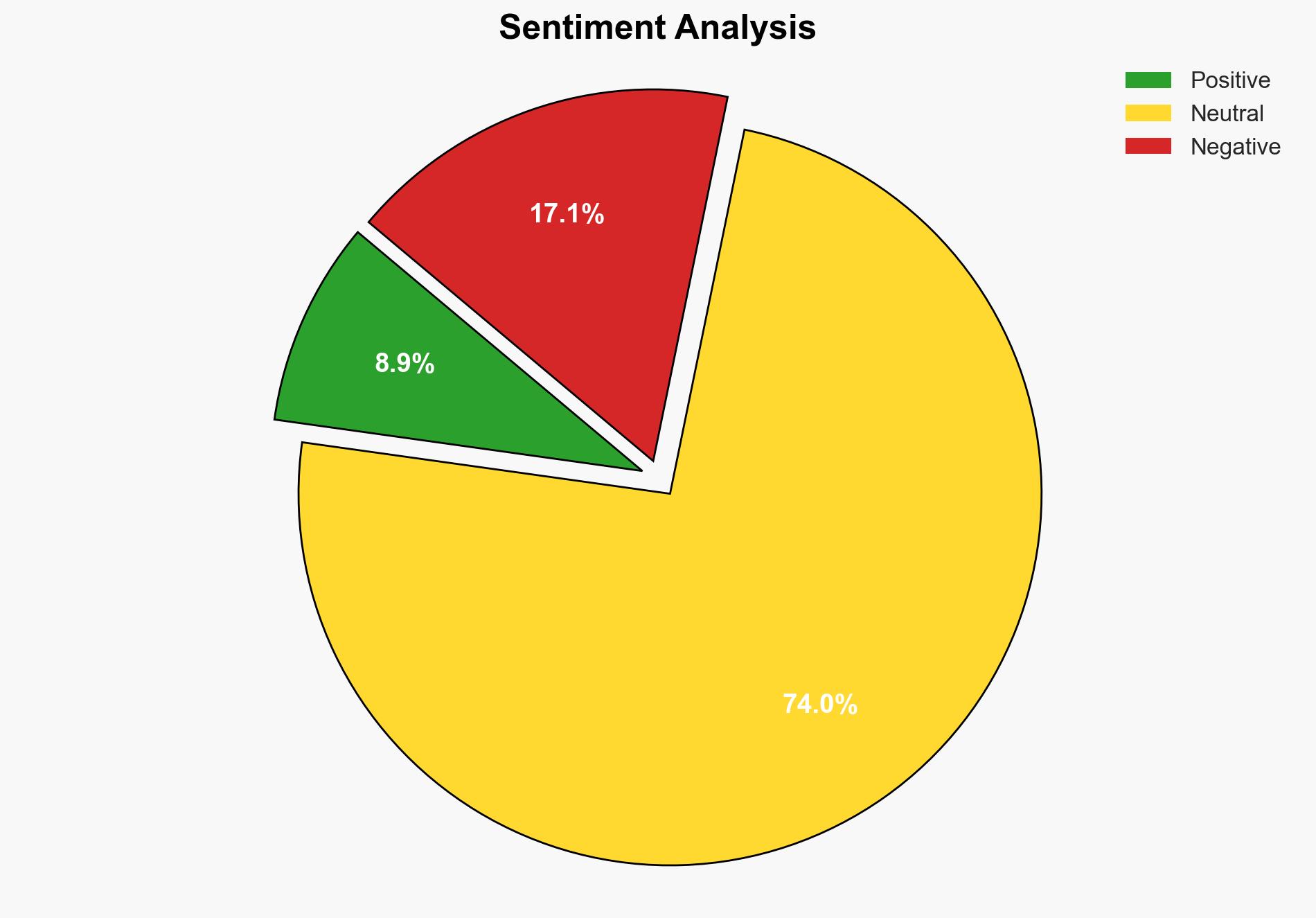Sidewinder goes nuclear charts course for maritime mayhem in tactics shift – Theregister.com
Published on: 2025-03-10
Intelligence Report: Sidewinder goes nuclear charts course for maritime mayhem in tactics shift – Theregister.com
1. BLUF (Bottom Line Up Front)
The Sidewinder group, known for its advanced persistent threat (APT) capabilities, has shifted its focus towards maritime and nuclear organizations, particularly in South Asia and Africa. This marks a significant change from its previous targets, which included government and military institutions in China, Pakistan, Sri Lanka, and parts of Africa. The group’s tactics involve exploiting old vulnerabilities through spear-phishing campaigns, utilizing malicious documents to deliver malware. The strategic shift poses increased risks to critical infrastructure and highlights the group’s evolving threat landscape.
2. Detailed Analysis
The following structured analytic techniques have been applied for this analysis:
SWOT Analysis
Strengths: Sidewinder’s ability to quickly adapt and exploit vulnerabilities, maintaining an advanced toolkit for cyber operations.
Weaknesses: Reliance on outdated vulnerabilities may limit effectiveness against well-prepared targets.
Opportunities: Expansion into maritime and nuclear sectors offers new avenues for disruption and intelligence gathering.
Threats: Increased attention from cybersecurity firms and government agencies could lead to enhanced defenses and countermeasures.
Cross-Impact Matrix
The shift in Sidewinder’s focus to maritime and nuclear sectors could influence regional stability by increasing tensions among affected nations. The group’s activities may prompt neighboring countries to bolster their cybersecurity measures, potentially leading to regional cooperation or conflict over cyber defense strategies.
Scenario Generation
Best-case scenario: Enhanced international collaboration leads to improved cybersecurity defenses, mitigating the impact of Sidewinder’s operations.
Worst-case scenario: Successful attacks on critical infrastructure result in significant economic and political destabilization in affected regions.
Most likely scenario: Continued cyber operations by Sidewinder with incremental successes, prompting gradual improvements in regional cybersecurity measures.
3. Implications and Strategic Risks
Sidewinder’s activities pose significant risks to national security, regional stability, and economic interests. The group’s focus on maritime and nuclear sectors could disrupt critical infrastructure, leading to economic losses and heightened geopolitical tensions. The reliance on outdated vulnerabilities suggests a potential gap in cybersecurity defenses that could be exploited by other threat actors.
4. Recommendations and Outlook
Recommendations:
- Enhance cybersecurity measures across maritime and nuclear sectors, focusing on patching known vulnerabilities and improving threat detection capabilities.
- Foster international collaboration to share intelligence and develop coordinated responses to cyber threats.
- Invest in research and development of advanced cybersecurity technologies to stay ahead of evolving threats.
Outlook:
Best-case: Strengthened defenses and international cooperation mitigate the impact of Sidewinder’s operations.
Worst-case: Successful attacks lead to significant disruptions in critical infrastructure and regional instability.
Most likely: Incremental improvements in cybersecurity measures reduce the effectiveness of Sidewinder’s campaigns over time.
5. Key Individuals and Entities
The report mentions the following significant individuals and organizations:
Giampolo Dedola and Vasily Berdinkov are noted for their research on Sidewinder’s activities.
Kaspersky is highlighted for its role in identifying and analyzing the group’s tactics and tools.




